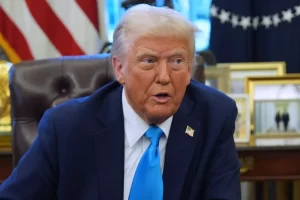As countries look to increase the use of public transport, experts explain why making buses, trams and trains free might not be a ‘magic wand’ to solve the problem.
Luxembourg recently celebrated three years of free public transport. And, according to the people who live there, it has been a resounding success.
As countries look to encourage citizens to ditch their cars to cut carbon emissions, could Luxembourg’s success be replicated across Europe?
“The quality of public transport needs to change completely,” says Francois Bausch Vice Prime Minister and Luxembourg’s Minister of Mobility and Public Works and of Defence.
“There is no magic wand. It’s not just one mode of transport which will solve all of our problems, but instead we must be truly multimodal, we have to mix them.”
How has Luxembourg transformed its transport network?
Bausch explains that the country decided to make public transport free for two reasons: to give everyone fair access and to encourage debate and awareness around a decade of change in its mobility system.
Back in 2013 when Bausch first took up his position, rush hour traffic jams were a daily occurrence in Luxembourg City centre. Now there are none thanks to the increased use of the tram system and a reorganisation of the way its streets work.
I do not make policies against cars, but for another mobility system in which the car has its place.
Francois Bausch
Vice Prime Minister and Luxembourg’s Minister of Mobility and Public Works and of Defence
The tram has exclusive right of way and has priority at crossings so is never stuck in traffic jams. This combined with the fact that it’s free encourages more people to use it. Bausch sees it as a measure of the success of Luxembourg’s transport transformation.
Cars haven’t completely disappeared and the country still has the highest car ownership per household in Europe. Around 230,000 people cross the border into Luxembourg each day for work and 75 per cent of these journeys are made by car.
“You shouldn’t argue against something, but for something,” Bausch says.
“I do not make policies against cars, but for another mobility system in which the car has its place.”
Will making public transport free encourage more people to use it?
Making public transport free isn’t necessarily the answer either. It works in a wealthy country like Luxembourg but for others, the aim should be to make it cheap, easy to use and accessible.
A recent Greenpeace report on public transport across Europe says that reducing prices is one of the “easiest and quickest ways” to encourage people to use it. The cost needs to be lower than that of running a car for this to work.
And public transport in Luxembourg isn’t really free for most people.
“Obviously it is paid through general taxation and since the people who pay more taxes in fact do not have free access to transport, they pay indirectly through their taxes,” says Bausch.
“But those who, for example, earn nothing or very little, they are the ones who pay no taxes or very few direct taxes, they really get it for free.”
When it comes to reducing prices, the Greenpeace report highlights other potential sources of funding like shifting money from fossil fuel subsidies, taxes on airline tickets or removing VAT from tickets.
Are there other ways to encourage more use of public transport?
Another major factor in getting people to stop using their cars is how easy it is to navigate transport networks.
“You can make public transport free of charge and it can derail very fast thereafter because there is no infra[structure] linked to it,” says Herald Ruitjers, director of DG Move, the European Commission body responsible for transport in the EU.
“There’s no ticketing linked to it, there is no combination between the different modes and connectivity between them and you, you’re out.”
You can make public transport free of charge and it can derail very fast thereafter because there is no infra[structure] linked to it,” says
Herald Ruitjers
Director of DG Move
The transformation in Luxembourg has been about far more than free transport, Bausch says. Over the last few years, the country has been investing around €500 per citizen per year on modernising and extending the railway network, for example.
“We invest four, five, six times more in the network, in the quality of the rail network than all the other European countries. And obviously, we have also completely reformed the bus system, the national buses that we have.”
“If you want people to change their habits, you have to make sure the alternative actually works,” he adds.
Why do we need to shift to public transport instead of cars?
Whether it’s free of charge or not, the main goal is for more people to use public transport. But why, if the future is electric cars?
“Public transport is many times more efficient than individual transport,” explains Ruitjers.
“Individual cars consume, for instance, about seven times more electricity. I’m talking now about electric cars for the future than, for instance, a train or a tram or a metro.”
He says this means that even in the future when we have fully decarbonised, we will still have to rely on public transport for capacity and energy efficiency.
“To find a balance between what is needed for us to have a liveable planet and what is needed to also ensure that this can be something that is, I would say, socially bearable for everyone,” Ruitjers concludes.
Source: Euro News































